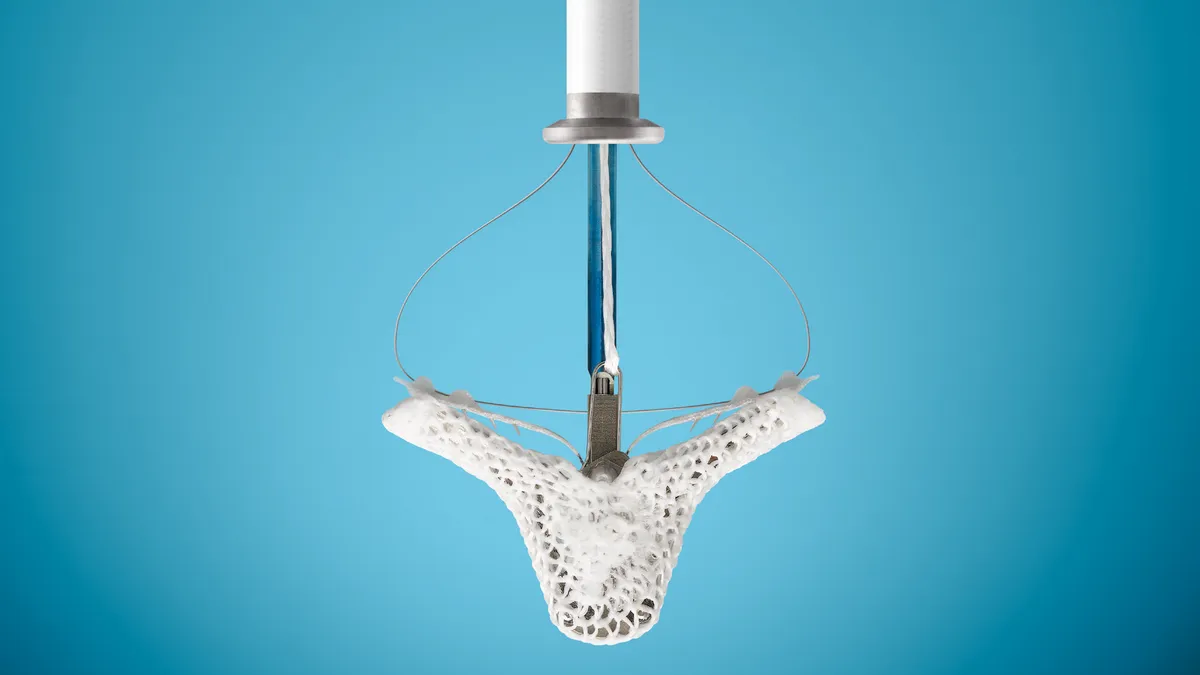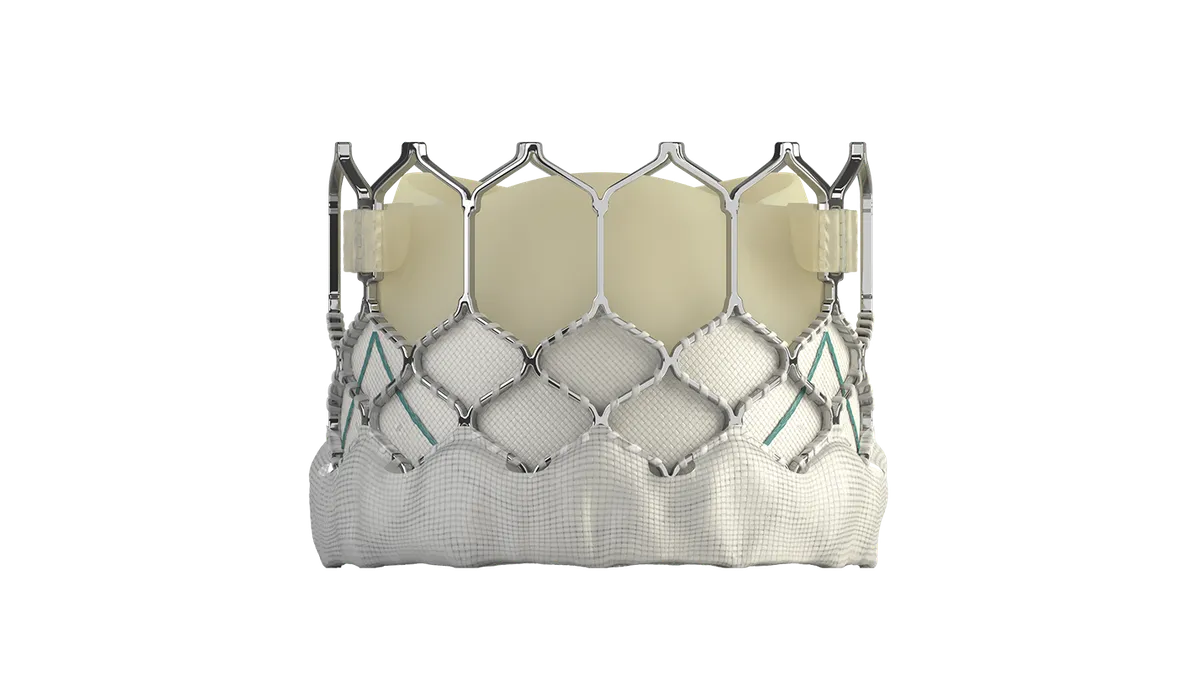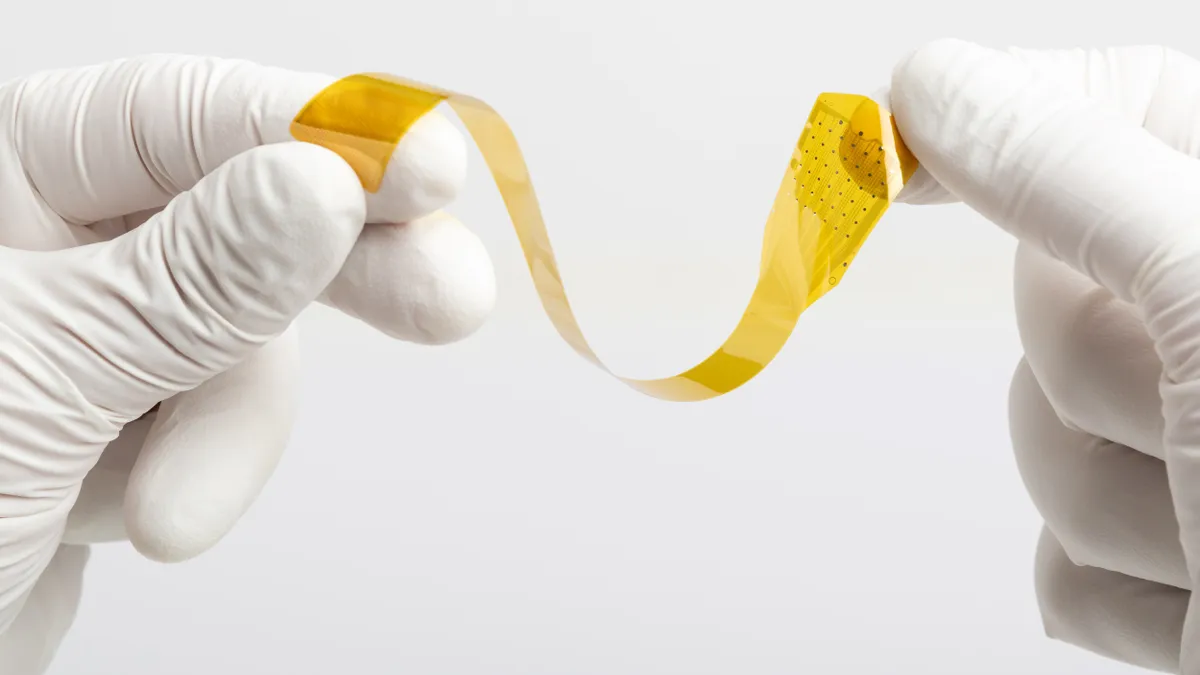Transcatheter aortic valve replacement has dominated the structural heart world in recent years, with the market currently valued at about $5 billion and the procedure becoming the primary form of aortic valve replacement in the U.S.
In 2021 and beyond, industry is setting its sights on new heart valve opportunities that could grow to be multiples of the TAVR market: transcatheter mitral valve replacement and repair.
Often in the shadow of the aortic market, mitral has a larger potential patient population, and companies with successful structural heart businesses like Abbott Laboratories and Edwards Lifesciences have secured leading positions in the market as it begins to take off.
Analysts and industry agree that the mitral and, later on, related tricuspid valves market will hit $3 billion by 2025 with mitral making up the majority of the projection.
Mitral regurgitation, or MR, is the leakage of blood flow back into the atrium of the heart. MR is the most common type of valvular disease and impacts about 2% of the global population, according to the National Center for Biotechnology Information.
Coupled with a large patient population is a low treatment rate compared to aortic stenosis. According to Edwards, just 2% of patients who need mitral interventions are treated with either surgery or a transcatheter procedure, compared to the 10-12% of patients who require aortic intervention that receive TAVR.
This large, under-penetrated patient base is why analysts and industry believe the space can hit the 2025 projection and grow significantly beyond that mark.
Jefferies equity analyst Raj Denhoy said that the market, which he estimated is currently valued at about $800 million, could grow in multiples of the 2025 projection. Denhoy added that eventually, the mitral market could also grow to be multiples of the TAVR market, which he projected to be close to $10 billion by 2025.
"It is really one of the next big opportunities," Denhoy said. "I mean, it's already a big opportunity — $800 million —but it's going to continue to grow for a long time to come."
This year has already brought a boost for the mitral space. CMS last week expanded coverage for transcatheter edge-to-edge procedures for patients with secondary mitral regurgitation, which could more than double the U.S. patient base eligible under previous coverage rules.
As companies have turned their focus to the mitral valve, cardiac surgeons have seen procedures increase.
Joseph Cleveland, a cardiac surgeon with the University of Colorado’s Anschutz Medical Center, said that after previously being more cautious of transcatheter mitral repair, general cardiologists are increasingly recommending patients for the procedure.
Matthew Romano, director of the Mitral Valve Clinic at the University of Michigan, similarly said that the mitral procedures are picking up and will grow over the next several years because "the current technology is offering a therapy for patients who otherwise may not be ideal surgical candidates, hopefully reducing their mortality risk and improving quality of life."
Much like TAVR procedures, transcatheter mitral procedures offer patients a minimally invasive alternative to open-heart surgery.
Romano, who is participating in Edwards and Abbott mitral device trials, said that even with the growth in procedures and the expansion of potential patients, open-heart surgery is still the "gold standard" and the challenge for transcatheter procedures will be producing similar results.
Abbott v. Edwards
Currently, Abbott is the clear leader of the mitral market. A version of MitraClip, the company’s mitral valve repair device, has been available in Europe since 2008 and the U.S. since 2013; it is still the only transcatheter mitral repair device approved for the U.S.
The product has become a top driver across Abbott’s structural heart portfolio. MitraClip brought in about $690 million in sales in 2019 and should bring in about $670 million in 2020, according to J.P. Morgan. Meanwhile, Abbott's entire structural heart business brought in about $1.4 billion in 2019 and was on a similar trajectory at the close of the third quarter last year.
Neil Moat, the chief medical officer of Abbott's structural heart business, said the mitral's growth opportunity is not just the fact that patients with mitral disease outnumber those with aortic stenosis, but patients are also often undertreated.
"Even before the era of TAVR ... penetration of treatment for mitral valve disease was much less than in the aortic valve," Moat said, adding that the number of potential patients will only continue to grow as the global population ages.
Over 100,000 patients have been treated so far with MitraClip, and while the company has launched MitraClip G4 in Europe and the U.S., fifth and sixth versions of the product are being developed, according to Moat.
The company's position as leader in the space may not be guaranteed as the market grows. After Edwards built itself on the success of its TAVR business, the company is launching a transcatheter mitral valve repair system of their own, called Pascal, and has made the market a key priority.
During a recent J.P. Morgan presentation, CEO Michael Mussallem stressed the opportunity for both mitral and tricuspid valves, both of which make up Edwards' overall market projection of $3 billion by 2025. The company is running three clinical trials for the Pascal device: two for mitral repair and one for tricuspid.
Bernard Zovighian, corporate vice president for Edwards' transcatheter mitral and tricuspid therapies business, said that Pascal's launch in Europe has gone well and the product is available in over 10 countries. However, Edwards does not expect U.S. approval for Pascal until the end of 2022, putting off a product launch and revenue contribution to 2023.
Despite Abbott's lead, Zovighian said that there is still a large opportunity in mitral as MitraClip has been studied for a small percentage of the potential patient population. While Zovighian would not project a specific long-term estimate, he said that Edwards expects the market to be "significantly bigger" beyond 2025.
"A lot of promise. A lot of patient need. But a lot to do, still, to make sure we make mitral a big market," Zovighian said. "I am very confident it will happen."
While Abbott and Edwards have both developed tricuspid products — Edwards with Pascal and Abbott's TriClip device, which is built on a MitraClip design — Cleveland questioned if the tricuspid market would take off until a device is developed specifically for the valve.
Potential hurdles for growth
Both Moat and Zovighian said that the complexity of the disease requires a broader portfolio of devices to suitably treat patients, and both companies are developing transcatheter valve replacement devices along with their repair devices. However, Cleveland said that due to the complexity of the mitral valve, the replacement market and treatments are improving but still in "nascent stages."
Managing the anatomical features of the mitral valve and reaching the valve are both more challenging than aortic procedures, according to Romano. Furthermore, once the valve is reached, the device must be placed and secured, which can be more difficult than in the more rigid, calcified aortic valves.
Both surgeons said that the valve's complexity compared to the aortic valve have also contributed to the slower development of the market and could present challenges for device development. These challenges could also be a hurdle to a widespread rollout and adoption of mitral valves and procedures compared to the speed of TAVR adoption.
However, Cleveland said device technology and improvements in other areas like cardiac electronic imaging are quickly catching up to the valve's complexities, allowing surgeons to more easily conduct the procedure.
"I'm always a guarded optimist when it comes to technology. I kind of never bet against it because it seems like a group of smart engineers with enough venture capital can seem to almost overcome everything," Cleveland said.
Prioritizing the mitral space
Analysts have faith that Edwards can be a suitable rival for Abbott and steal market share away from the company over the coming years, but Abbott's lead is still significant.
While analysts project that MitraClip sales alone should mirror past performances of near $700 million, Edwards projected that global sales for transcatheter mitral and tricuspid therapies will double in 2021 to about $80 million.
A catch-up for Edwards, however, could come from its relationship with surgeons built through its large presence in TAVR and the benefit of being the new option for surgeons, according to Cleveland.
Evercore analyst Vijay Kumar said that Edwards' success will be dependent on solid clinical data from the trials being conducted for both repair and replacement devices.
Even with solid results, the Edwards timeline may make it difficult to catch Abbott in the near-term. If the mitral market hits the 2025 projection, about $2 billion will be made up by Abbott and $500 million by Edwards, according to Kumar.
Abbott's head start may also pay off sooner rather than later. CMS' recent reimbursement expansion for secondary MR could double or triple MitraClip’s U.S. patient base. Meanwhile, Edwards is still working for the U.S. approval of Pascal.
Medtronic and Boston Scientific are also working on transcatheter mitral products, but those are still three to four years away from being launched, Kumar said.
This distance leaves Edwards and Abbott alone to fight for market share for the foreseeable future, which could be strategically crucial for both companies.
"For Edwards, [the mitral market] is of paramount importance because, again, it is the next chapter of the story for that company," Jefferies’ Denhoy said. "For Abbott, it's one of the growth drivers for them for the last several years, so they are acutely focused on it as well."



















